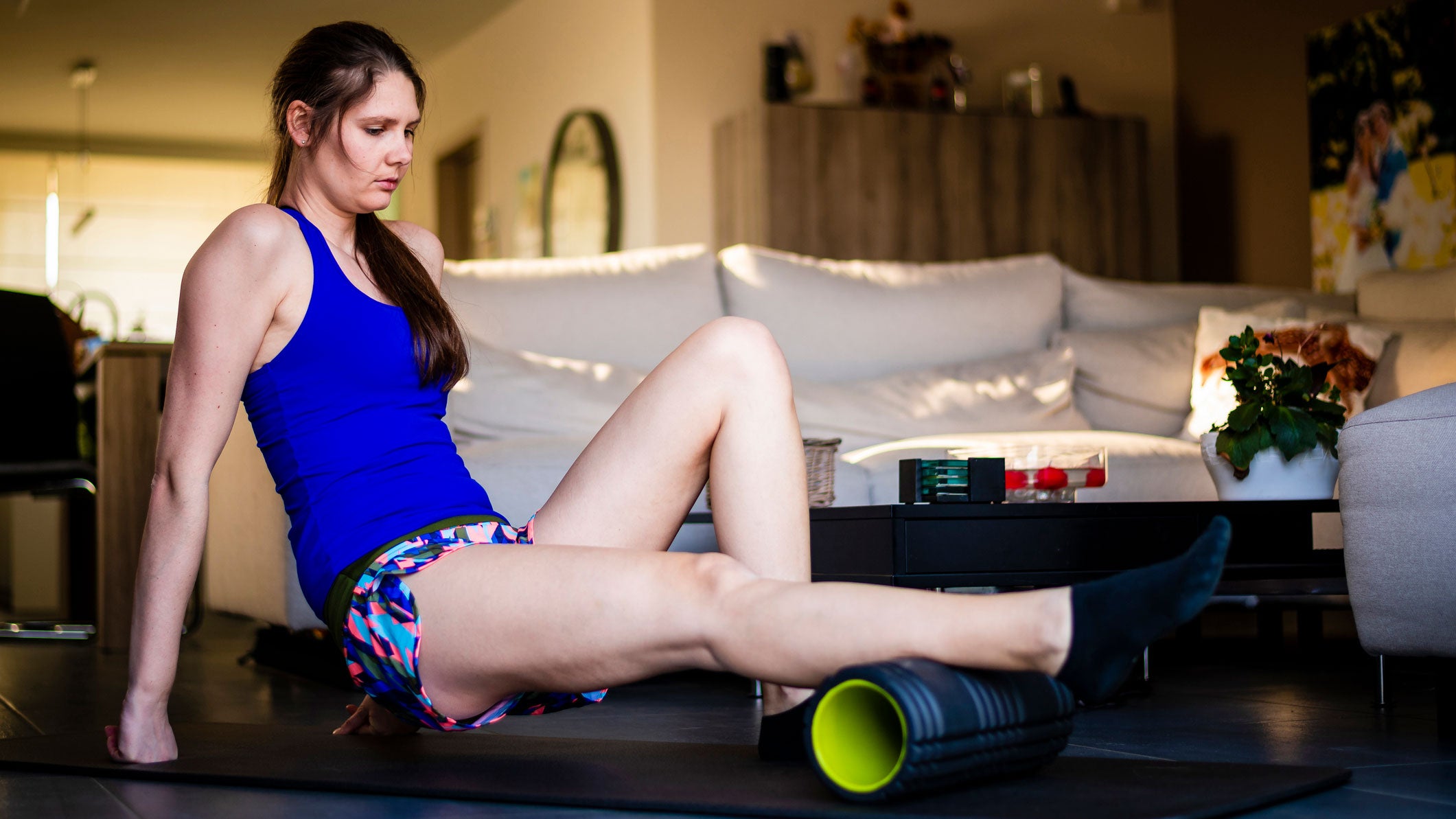How to Avoid Injury When You're Running More

There are two things runners enjoy: a structured workout routine, and working hard on that workout routine. So when things are taken off the table, it’s tempting to channel that work ethic into running more miles. There is a benefit to being adaptable and to focusing on one sport for a while. Running more miles can make you better, but only if you can survive the mileage increase by avoiding injury. Here are three things you can do from home to focus on running in a healthy, sustainable, and performance-enhancing way that avoids injury.
1. Perform a weekly mobility “full-body scan” with 15-minute mobility sessions (while watching Netflix).
Let’s be honest, most of us won’t allot time for mobility work until we’re already injured and have no other choice. So let’s flip that around. On the first day, spend 15 minutes on your quads and glutes. The next day, focus on your hamstrings and calves. The third day shift to your achilles, ankles, and feet. The fourth day move to your shoulders and thoracic spine. Wash, rinse, and repeat. By performing these regularly, you establish a good baseline of what’s your “normal” and catch injuries before they sneak up on you. Let’s also recognize this fact: Overuse injuries do not come from “nowhere”—they come from neglect and poor awareness. Don’t have a foam roller? Get creative and use a coffee mug or wine bottle. The harder you drive your body, the more love it needs. Already dealing with an injured body part? Hit that area every day or every other day.
2. Add structure to your runs with dynamic warmups, drills, and strides.
In other words, run better, don’t just run more. The additional run miles should probably be done pretty slow on average with a focus on your technique. Start with a 5- to 10-minute easy run warmup. Bonus points if you can focus on breathing in and out of your nose for the duration (to activate that diaphragm). Stop for 3 minutes of dynamic exercises to get muscles engaged and your joints open—try leg swings, arm swings, lunges, and squats. Run the next 10 minutes focusing on a drill for 30 seconds, and running easy and light for 30 seconds. You could focus on one drill the entire time or alternate through a few, but either way, you’re running with intention and focus. Finally, finish with 4 to 6 x 20-second strides at a faster pace. Focus on driving your hips forward and letting your stride lengthen behind you. Ease into these, and don’t run faster than feels good. Let me say that again: Ease into these, and don’t run faster than feels good. Run the balance at an easy effort and finish with some additional mobility work.
3. Do at least two full-body strength sessions weekly.
Worry less about “runner” specific movements here and more about building yourself into an athlete that can squat, jump, push, pull, change direction, balance, stabilize, and breathe under tension. The four movements I start all of my athletes on—and require no equipment—are the squat, pushup, lunge, and burpee. Add supplementary work as needed: single-leg exercises and core work. With no races in the near future, it’s ok to emphasize these sessions by pushing yourself harder with a bit more volume. Try an ascending ladder of squats and pushups: 2 reps of each, 4 reps, 6 reps, 8 reps, and finish at 10 reps of each movement.
Where do you break down and fall apart? Where can you push and keep going? Then come back down the ladder: 10-8-6-4-2 for lunges and burpees. Want an advanced option? Go 1 rep of each, 2 reps of each, all the way to 10 reps of each for 55 total reps of each movement, and then 10-1 for the lunges and burpees. These sessions don’t take long, but they work wonders for ankle, hip, and shoulder health and, by virtue, your ability to execute without breakdown.
We are in a unique time, but if you can adjust your mindset, you’ll find there’s a real opportunity here to come out strong, healthy, and moving better than you ever have.
About Nate:
San Francisco-based Nate Helming co-founded The Run Experience with the goal of reaching a broader audience of runners and outdoor enthusiasts who want to be able to run and enjoy the outdoors and avoid injury. He has helped athletes finish their first races, conquer new distances, overcome pre-existing injuries, set new PRs, reach the podium, and qualify for national and world level events.